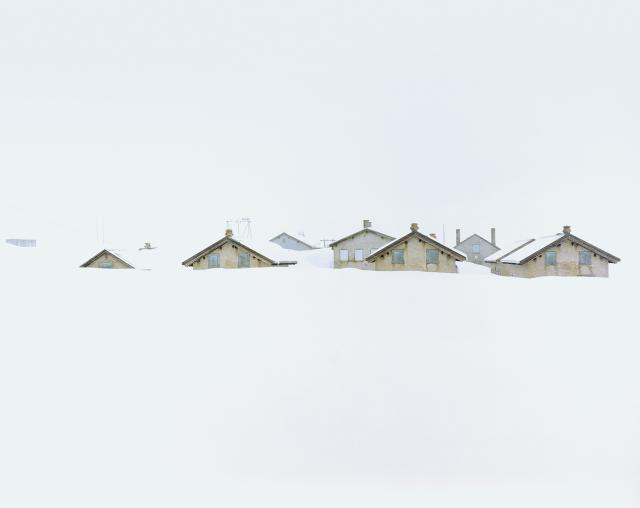In the muffled atmosphere of snow, Thomas Flechtner focuses on the traces human beings leave behind in their environment. Here it is a way of lending greater brilliance to the whites, which contrast with the earthy tones of the constructions.
Insistently the photographer reduces his landscapes to a few elements and forces the eye to concentrate on the subtle nuances of what he has chosen to frame with his camera. Flechtner himself speaks of a suspended state or the slow disappearance of the world, seen in this instance as a few small houses holding out against the snow.
In Passes: Furka the apparently serene uniform white is actually belied by the aggressive passage of the snow, which streaks the facades diagonally. Making the snow storm a concrete reality for the viewer, these diagonals, visually recording the passage of time on the film, evince the long exposures the photographer works with. A quicker shutter speed would have in fact frozen the snowflakes in place with a visual precision that is overly sharp for an artist who prefers to move at his own pace in our rushed, hyperactive age.
Insistently the photographer reduces his landscapes to a few elements and forces the eye to concentrate on the subtle nuances of what he has chosen to frame with his camera. Flechtner himself speaks of a suspended state or the slow disappearance of the world, seen in this instance as a few small houses holding out against the snow.
In Passes: Furka the apparently serene uniform white is actually belied by the aggressive passage of the snow, which streaks the facades diagonally. Making the snow storm a concrete reality for the viewer, these diagonals, visually recording the passage of time on the film, evince the long exposures the photographer works with. A quicker shutter speed would have in fact frozen the snowflakes in place with a visual precision that is overly sharp for an artist who prefers to move at his own pace in our rushed, hyperactive age.
